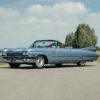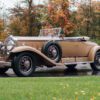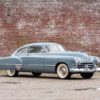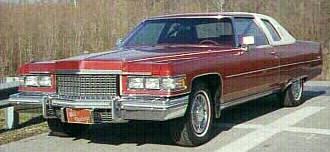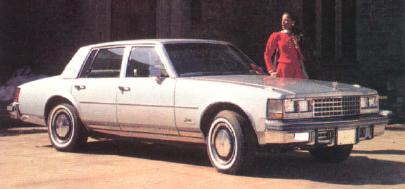Cadillac Models & History 1976
From the beginning, Cadillac had been nearly synonymous with luxury. People spoke of countless products as “The Cadillac of (whatever).” Through the tailfinned postwar years, Cadillacs had been poshly (sometimes gaudily) appointed, gargantuan in size, powered by some of the biggest V-8s around. Owning one was viewed as a milepost, a demonstration that one had “arrived.”
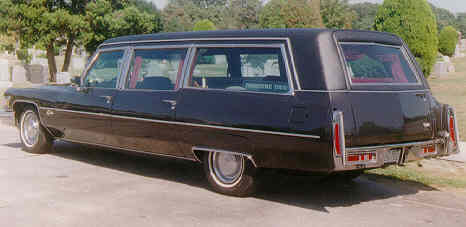

- d’Elegance
- Talisman
- Cabriolet models.
Yet this was the final season for the mammoth Seventy-Five limousine and nine-passenger sedan. Led by Seville’s popularity, Cadillac set records for both sales and production.
Even though 1976 was a year of refinement rather than major body or engineering change at Cadillac, it signalled the end of several eras. GM’s last convertible was in its final season. This would be the final year for the low-rung Calais (after a dozen years in the lineup), and for the traditional mammoth Cadillac. Full-size Cadillacs retained the same ample dimensions as in 1975, but the new international-size Seville (introduced in mid-year) was 27 in. shorter, 8 in. narrower and a thousand pounds lighter than a Sedan DeVille. New grilles on all models carried on the traditional Cadillac crosshatch theme, though with a tinier pattern than in 1975 (actually crosshatching within crosshatching). Cornering lamps on Calais, DeVille, Brougham, nine-passenger and limo got new horizontal chrome trim, while taillamps gained a new bold look. Standard wheel discs kept the three-dimensional Cadillac crest on the hub (except Eldorado).
Cadillac’s ten models came in four size categories:
- Family: Calais & DeVille
- Personal: Eldorado
- International: Seville
- Executive: Fleetwood Brougham and Seventy-Five
Full-size Caddies stretched as long in wheelbase as 133 inches and 233.7 in. overall (limos, 151.5 and 252.2 in. respectively). They still carried a monstrous 500 cu. in. V-8. The smaller Seville, however, actually cost more than bigger Cadillacs. It was powered by a more reasonably sized 350 cu. in. V-8 with electronic fuel injection. (Fuel injection was optional in all models except the Fleetwood Seventy-Five.)
Eight different color accent stripes were available, and seven convertible top colors for the Eldorado. Vinyl roofs now were integral padded Elk Grain material except on Seville and Seventy-Five, which had cross-grain padded vinyl. Interiors were essentially the same as in 1975 with rosewood grain trim, plus bright wreath/crest and script plaques. New trims for full-size models include sporty plaids, plush velours, knits, and distinctive genuine leathers. Calais and DeVille coupes had a new vinyl roof, whose top molding served as continuation of the door “belt” molding.
All full-size Caddies except Eldorado included a Controlled (limited-slip) Differential for extra traction. All had lamp monitors atop each front fender to show status of front and rear lights. All could have optional illuminated entry and theft-deterrent systems. The new Freedom battery never needed water. All but Eldorado offered new-look turbine-vaned and wire wheel covers. A new option locked doors when the lever was shifted to “Drive.” Cadillac also offered Track Master, a computerized skid-control system that automatically pumped the back brakes in an emergency situation to shorten stopping distance.
Of special note on the option list was the Air Cushion Restraint System, announced for all models except Eldorado convertible and Fleetwood 75. This was a forerunner of the air bags that received so much publicity a few years later. Another option was the Astroroof, introduced in 1975, with sliding sunshade that permitted use as a electrically-operated sunroof or a transparent closed skylight. Both it and the “ordinary” sunroof panels could give safety along with an open-air feeling, now that the convertible was about to disappear.
Three full-size special editions with new refinements were offered this year: d’Elegance, Talisman and Cabriolet. New options included a pushbutton Weather Band (exclusive to Cadillac) built into the AM/FM stereo signal-seeking radio; loose-pillow style seats for d’Elegance packages; plus power passenger and manual driver seatback recliners for 50/50 front seats.
Of the 15 standard and six optional Firemist body colors, 13 were new this year. The list included:
- Cotillion White
- Georgian Silver
- Academy Gray
- Sable Black
- Innsbruck Blue
- Commodore Blue
- Dunbarton Green
- Firethorn
- Claret
- Pueblo Beige
- Kingswood Green
- Calumet Cream
- Phoenician Ivory
- Brentwood Brown
- Chesterfield Brown.
For extra cost, buyers could order any of six Firemist colors:
- Crystal Blue
- Amberlite
- Greenbrier
- Galloway Green
- Florentine Gold
- Emberglow.
Vinyl roofs came in
- dark blue
- silver blue
- firethorn
- mahogany
- silver metallic
- dark brown metallic
- basic white
- black
- dark blue-green
- buckskin
- ivory.
All Cadillacs had as standard:
- automatic climate control
- bumper impact strips
- digital clock
- automatic glove box light
- High Energy Ignition
- inside hood release
- lamp monitors
- remote-control left-hand outside mirror
- litter receptacle
- automatic trunk light
- map light
- power six-way front-seat adjuster (not on Calais or 75 series)
- power front disc brakes (four-wheel on Eldorado)
- power door locks
- power windows
- power steering
- AM/FM radio including power antenna
- Soft Ray tinted glass
- spare tire cover
- tamper-resistant odometer
- Turbo Hydra-matic transmission
- washer fluid level indicator
- steel-belted whitewall tires.
For 1976, there were six models:
- Calais: two-door coupe and four-door hardtop sedan
- DeVille: two-door coupe and four-door sedan
- Fleetwood Brougham: four-door sedan
- Fleetwood Seventy-Five: four-door sedan, four-door limousine, and commercial chassis used in hearses and ambulances, etc.
- Eldorado: two-door hardtop coupe and two-door convertible
- Seville: four-door sedan
| I. D. DATA |
|---|
- Cadillac’s 13-symbol Vehicle Identification Number (VIN) was located on the forward edge of the windshield trim molding, visible through the windshield.
- The first digit is “6,” indicating Cadillac division.
- The second symbol indicates series:
- “B” Fleetwood Brougham
- “C” Calais
- “D” DeVille
- “F” Fleetwood 75
- “L” Eldorado
- “S” Seville
- “Z” commercial chassis.
- Symbols 3-4 show body type:
- “47” 2-door coupe
- “49” 4-door hardtop sedan
- “69” 4-door sedan
- “23” 4-door sedan with auxiliary seat
- “33” 4-door limousine with auxiliary seat and center partition window
- “67” 2-door convertible
- “90” commercial chassis.
- Symbol five is the engine code:
- “R” V8-350 FI
- “S” V8-500 4Bbl. or FI.
- The sixth symbol indicates model year (“6” = 1976).
- Symbol seven is for assembly plant:
- “Q” Detroit, MI
- “E” Linden, NJ.
- The last six digits show the sequence in which the car was built:
- 100001 through 400000 for “C” series made in Detroit and all Eldorados
- 600001 through 690000 for “C” models built in Linden.
- An engine unit number is on the block behind the left cylinder head
- a nine-digit VIN derivative that shows model year, plant and sequence number is on the block behind the intake manifold.
- Engine number of 350 V-8 is stamped on the front left side of the block, below the head.
- A body identification plate on the top right surface of the shroud under the hood, near the cowl), reveals style number, trim number, body number, paint number, and date of assembly (month 01 through 12, week A through E) followed by codes for factory-installed options.
| ENGINES |
|---|
| Description | Standard Engine | Eldorado Engine | Seville |
|---|---|---|---|
| Engine type | V-8 Overhead valves. Cast iron block | ||
| Main bearings | Five | ||
| Valve lifters | Hydraulic | ||
| Displacement | 500 cubic inches (7.7 litres) |
500 cubic inches (8.2 litres) |
350 cubic inches (5.7 liters) |
| Bore and stroke | 4.300 x 4.304 in. (109 x 103 mm) |
4.300 x 4.304 in. (109 x 109.3 mm) |
4.057 x 3.385 in. (103 x 86 mm) |
| Compression ratio | 8.25:1 | 8.25:1 | 8.0:1 |
| Brake horsepower (net SAE) | 210 @ 3600 rpm | 210 @ 3600 rpm | 180 @ 4400 rpm |
| Torque | 380 ft. lbs. @ 2000 rpm | 380 ft. lbs. @ 2000 rpm | 275 ft. lbs. @ 2000 rpm |
| Oil pressure | 35 psi | 35 psi | 35 psi |
| Carburetor | Rochester four-barrel Quadrajet Model 4MV | – | |
| CHASSIS FEATURES |
|---|
| Model | Wheelbase | Overall length | Width | Tires |
|---|---|---|---|---|
| Seville | 114.3 in | 204 in | 72 inches | GR78 x 15B |
| Brougham | 133 in | 234 in | 80 inches | L78 x 15/B white sidewall bias belted |
| Eldorado | 126.3 | 225 in | ||
| Commercial chassis | 157.5 in | – | L-78 x 15/B black sidewall bias belted | |
| Seventy-Five | 151.5 in | 253 in | ||
| All others | 130 in | 231 in |
| POWERTRAIN OPTIONS |
|---|
| Trackmaster | $250 |
|---|---|
| Controlled differential (except Eldorado) | $60 |
| Fuel Injection | $600 |
| CONVENIENCE OPTIONS |
|---|
| Talisman Brougham | $1788 |
|---|---|
| Astro roof | $843 |
| Sun roof | $668 |
| Rear window defroster, standard on 75s | $73 |
| Automatic Level Control | $84 |
| Cruise Control | $100 |
| Eldorado reclining seat | $188 |
| Air cushion restraints | $300 |
| Coupe DeVille Cabriolet, without sun roof | $236 |
| Eldorado Cabriolet Coupe, without sun roof | $413 |
| Brougham d’Elegance Group | $784 |
| DeVille d’Elegance group | $350 |
| Dual Comfort Six-Way passenger seat | $125 |
| AM/FM stereo with tape | $229 |
| Padded roof on 75s | $745 |
| HISTORICAL |
|---|
- Introduced: September 12, 1975 (in showrooms Sept. 18).
- Model year production (U.S.): 309,139, which set a record.
- Calendar year production (U.S.): 312,845.
- Calendar year sales by U.S. dealers: 304,485 for a 3.5 percent share of the industry total, down from 267,049 (3.8 percent) in 1975.
- Model year sales by U.S. dealers: 299,579.
| HISTORICAL FOOTNOTE |
|---|
This year beat the all-time record (set in 1973) for sales and production, with 309,139 Cadillacs built. Seville was the shining star of the sales rise. After a brief 1975 model run, production zoomed upward for full-year 1976. At $13.000, Seville was the most costly standard domestic production car built by the Big Four automakers. It also offered a foretaste of what was coming soon as GM downsized all its models. Most Cadillacs, including all Sevilles and Eldorados, were built in Detroit; but 42,570 vehicles emerged from the Linden, New Jersey plant.
Full-size “standard” Cadillacs continued to sell well, defying the market conditions of the mid-1970s. Exactly 14,000 Eldorado convertibles were built in their final season (compared to just 8,950 in 1975). Cadillac promoted them as the “Last of a magnificent breed,” The actual “last” American convertible was driven off the line at Cadillac’s Clark Avenue plant in Detroit on April 21, 1976, by general manager Edward C. Kennard and manufacturing manager Bud Brawner. Passengers for this major media event included several production workers and Detroit mayor Coleman Young. Just 60 years before, the first Caddy to use the name “convertible” had appeared. For the past five years, Eldorado had been the only luxury American convertible; and for 1976, the sole survivor of the breed.
Reasons cited for the loss of ragtop popularity included
- widespread use of air conditioners
- high-speed cruising
- sunroofs and vinyl roofs
- improved audio qualities of stereo radio/tape systems, which couldn’t be appreciated fully in an open vehicle.
Actually, Cadillac produced 200 identical “final” convertibles, dubbed “Bicentennial Cadillacs” by Mr. Kennard. The one and only last example was kept for the company’s collection. All 200 were white with white top, white wheel covers, and white leather upholstery with red piping, dash and carpeting. A dash plaque confirmed the fact that it was one of the last–at least until the ragtop mysteriously re-emerged once again in the early ’80s. Speculation sent prices way UP. Their original $11,049 sticker price meant little as some “collectors” quickly began to snap up open Eldos at prices approaching $20.000. But before too long, prices fell almost as swiftly.
Convertibles never really disappeared. Within months various conversion manufacturers were slicing metal roofs off Caddy coupes to create custom convertibles. But the next regular production ragtop would be Chrysler’s LeBaron in 1982. In most recent years, over 2,000 Fleetwood commercial chassis had been produced annually, for conversion to hearses and ambulances. Most of those conversions were done by three companies: Superior, Miller-Meteor, or Hess & Eisenhardt. In addition, stretch limousines were built on Cadillac chassis by Moloney (in Illinois) and Wisco (in Michigan), among other specialty firms.


